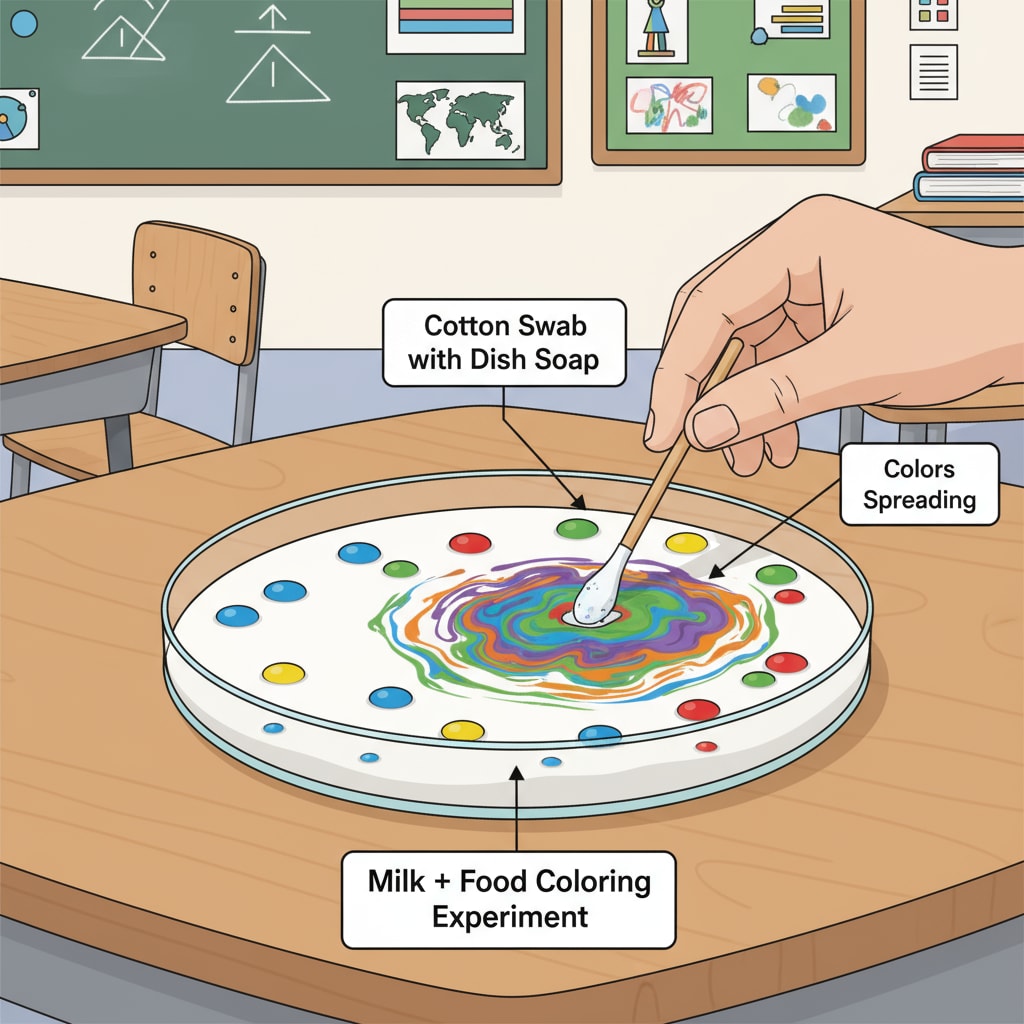Science experiments are a wonderful way to spark the curiosity of primary school students and prepare them for exciting science exhibitions. These hands-on activities not only make learning fun but also lay a solid foundation for their scientific understanding. In this guide, we will explore some simple yet fascinating experiments that can be conducted at home or in the classroom using everyday items.

Experiment 1: The Dancing Salt
This experiment is all about sound waves. For this, you’ll need a bowl and some salt. First, place the bowl in front of a speaker. Then, play some loud music. You’ll notice the salt start to bounce and “dance” on the surface of the bowl. This happens because sound waves are vibrations that travel through the air and cause the salt to move. As a result, students can visually observe the concept of sound waves. Sound wave on Wikipedia
Experiment 2: The Color-Changing Milk
Here’s an experiment that explores surface tension. Gather some milk, food coloring, and a cotton swab dipped in dish soap. Pour some milk into a shallow dish. Add a few drops of different colored food coloring to the milk. Then, touch the tip of the cotton swab with dish soap to the food coloring. Watch as the colors start to spread and mix in an amazing way. The dish soap breaks the surface tension of the milk, causing the colors to move. It’s a great way for students to understand this scientific principle. Surface tension on Britannica

These experiments not only provide valuable learning experiences but also help students develop skills like observation, hypothesis formation, and conclusion drawing. They are perfect for getting students interested in science and can be great projects for school science exhibitions. By engaging in these activities, students can become little scientists, exploring the world around them with wonder and curiosity.
Readability guidance: The experiments are presented in a clear and straightforward manner. Each experiment has a short description and explanation. Transition words like “first”, “then”, and “as a result” are used to make the content flow smoothly. Short paragraphs and simple language ensure easy comprehension for primary school students.


